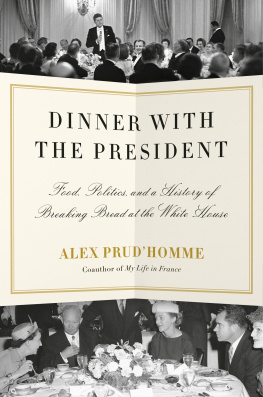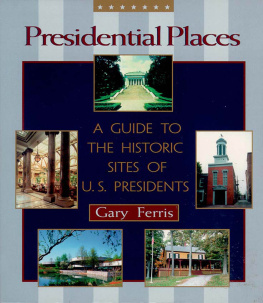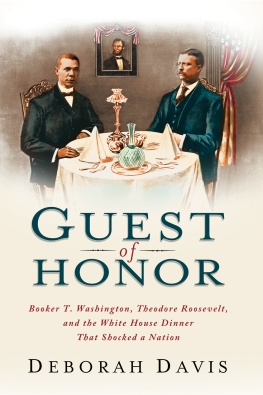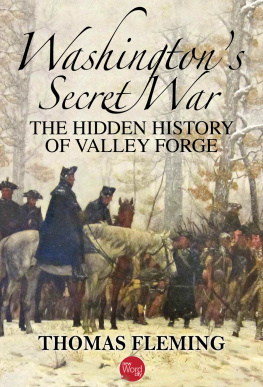Alex Prudhomme - Dinner with the President: Food, Politics, and a History of Breaking Bread at the White House
Here you can read online Alex Prudhomme - Dinner with the President: Food, Politics, and a History of Breaking Bread at the White House full text of the book (entire story) in english for free. Download pdf and epub, get meaning, cover and reviews about this ebook. City: New York, year: 2023, publisher: Knopf, genre: History. Description of the work, (preface) as well as reviews are available. Best literature library LitArk.com created for fans of good reading and offers a wide selection of genres:
Romance novel
Science fiction
Adventure
Detective
Science
History
Home and family
Prose
Art
Politics
Computer
Non-fiction
Religion
Business
Children
Humor
Choose a favorite category and find really read worthwhile books. Enjoy immersion in the world of imagination, feel the emotions of the characters or learn something new for yourself, make an fascinating discovery.
- Book:Dinner with the President: Food, Politics, and a History of Breaking Bread at the White House
- Author:
- Publisher:Knopf
- Genre:
- Year:2023
- City:New York
- Rating:4 / 5
- Favourites:Add to favourites
- Your mark:
Dinner with the President: Food, Politics, and a History of Breaking Bread at the White House: summary, description and annotation
We offer to read an annotation, description, summary or preface (depends on what the author of the book "Dinner with the President: Food, Politics, and a History of Breaking Bread at the White House" wrote himself). If you haven't found the necessary information about the book — write in the comments, we will try to find it.
[A] beautifully written book about how the presidential palate has helped shape America...Fascinating.Stanley Tucci
Some of the most significant moments in American history have occurred over meals, as U.S. presidents broke bread with friends or foe: Thomas Jeffersons nationbuilding receptions in the new capital, Washington, D.C.; Ulysses S. Grants state dinner for the king of Hawaii; Teddy Roosevelts groundbreaking supper with Booker T. Washington; Richard Nixons practiced use of chopsticks to pry open China; Jimmy Carters cakes and pies that fueled a dtente between Israel and Egypt at Camp David.
Here Alex Prudhomme invites readers into the White House kitchen to reveal the sometimes curious tastes of twenty-six of Americas most influential presidents, how their meals were prepared and by whom, and the ways their choices affected food policy around the world. And the White House menu grew over time from simple eggs and black coffee for Abraham Lincoln during the Civil War and celebratory turtle soup after and squirrel stew for Dwight Eisenhower, to jelly beans and enchiladas for Ronald Reagan and arugula for Barack Obama. What our leaders say about food touches on everything from our nations shifting diet and local politics to global trade, science, religion, war, class, gender, race, and so much more.
Prudhomme also details overlooked figures, like George Washingtons enslaved chef, Hercules Posey, whose meals burnished the presidents reputation before the cook narrowly escaped to freedom, and pioneering First Ladies, such as Dolley Madison and Jackie Kennedy, who used food and entertaining to build political and social relationships. As he weaves these stories together, Prudhomme shows that food is not just fuel when it is served to the most powerful people in the world. It is a tool of communication, a lever of power and persuasion, a form of entertainment, and a symbol of the nation.
Included are ten authentic recipes for favorite presidential dishes, such as:
- Martha Washingtons Preserved Cherries
- Abraham Lincolns Gingerbread Men
- William H. Tafts Billy Bi Mussel Soup
- Franklin D. Roosevelts Reverse Martini
- Lady Bird Johnsons Pedernales River Chili
Alex Prudhomme: author's other books
Who wrote Dinner with the President: Food, Politics, and a History of Breaking Bread at the White House? Find out the surname, the name of the author of the book and a list of all author's works by series.










